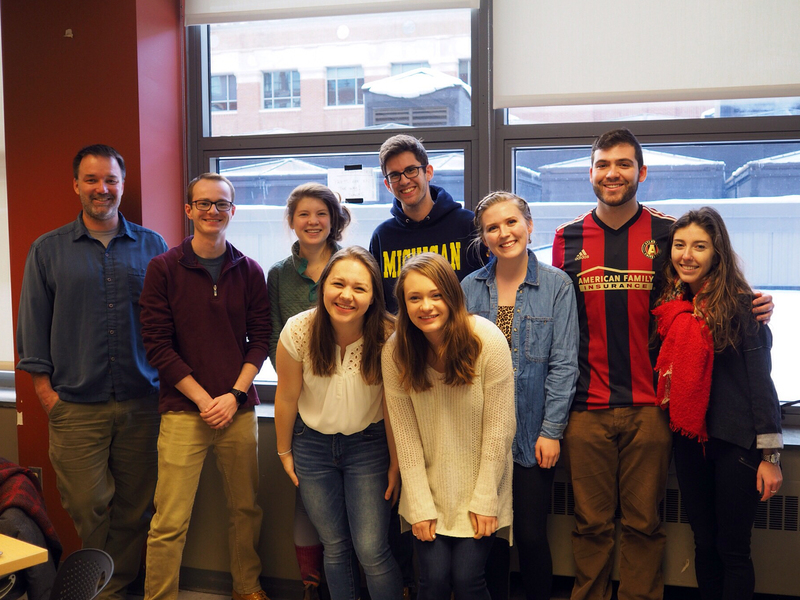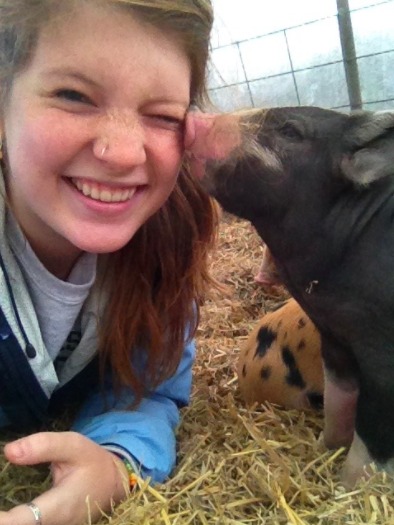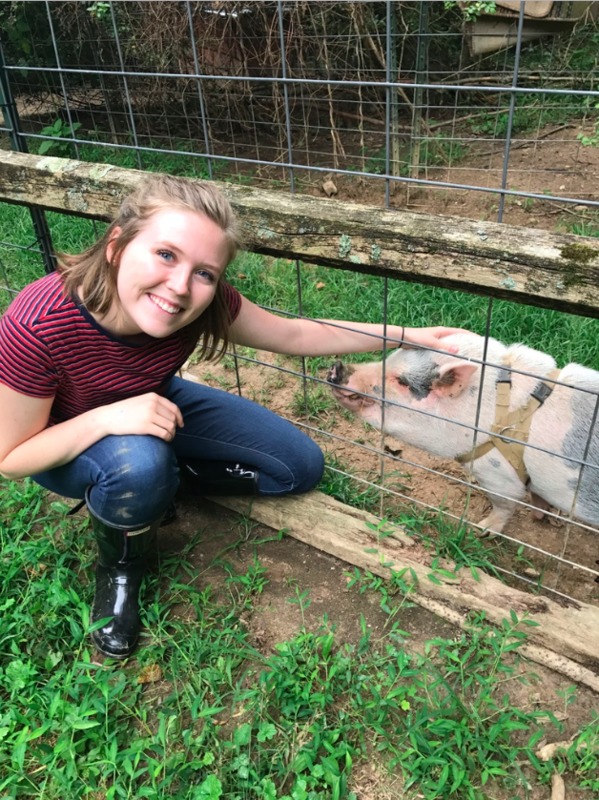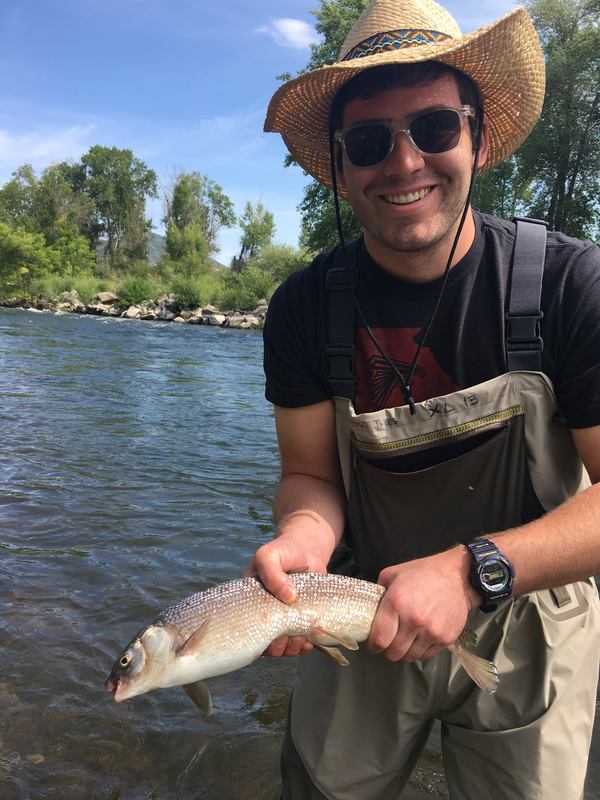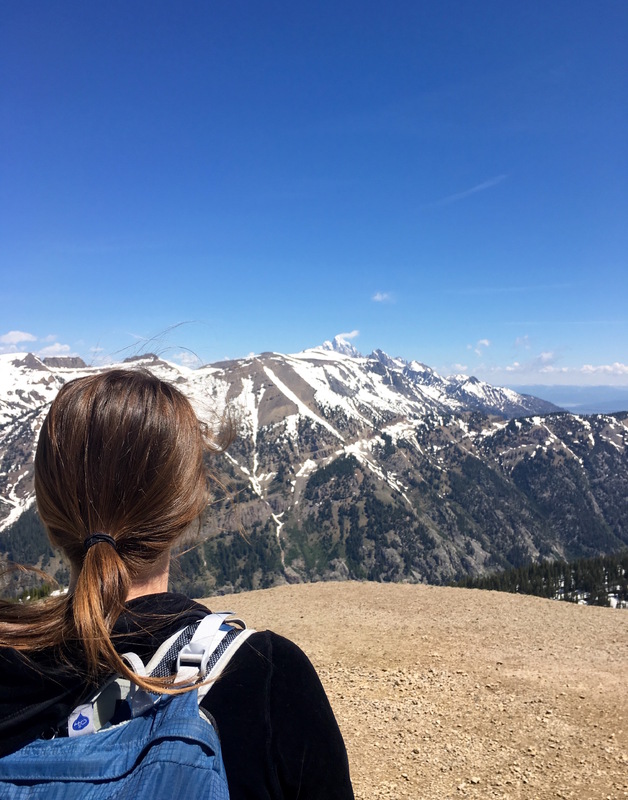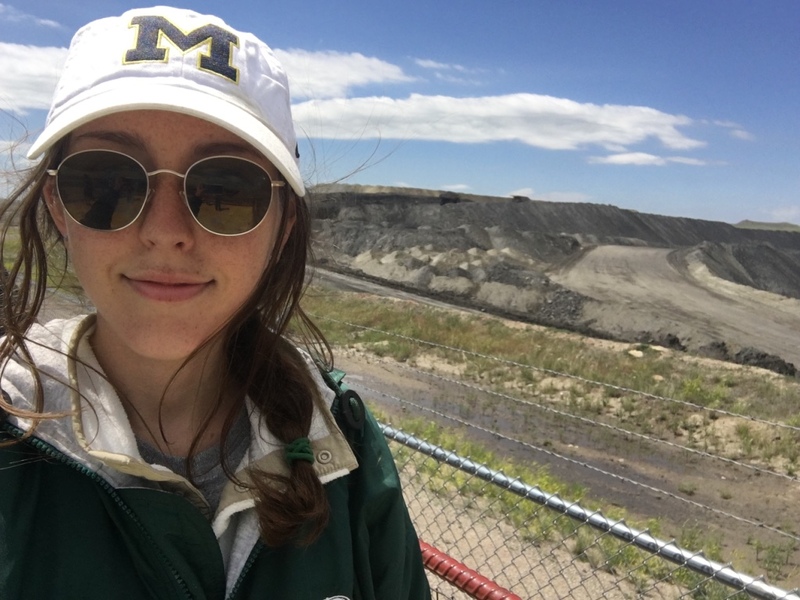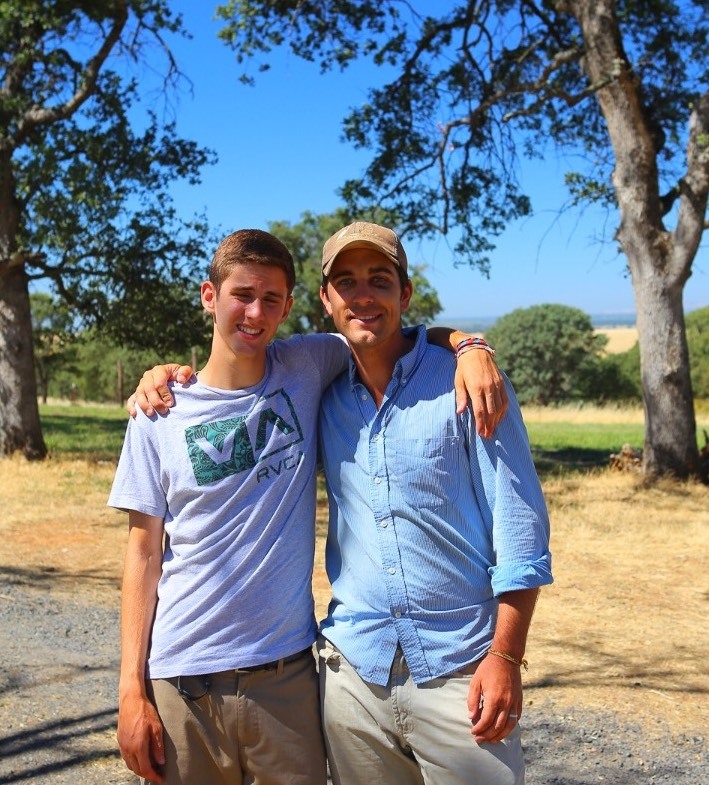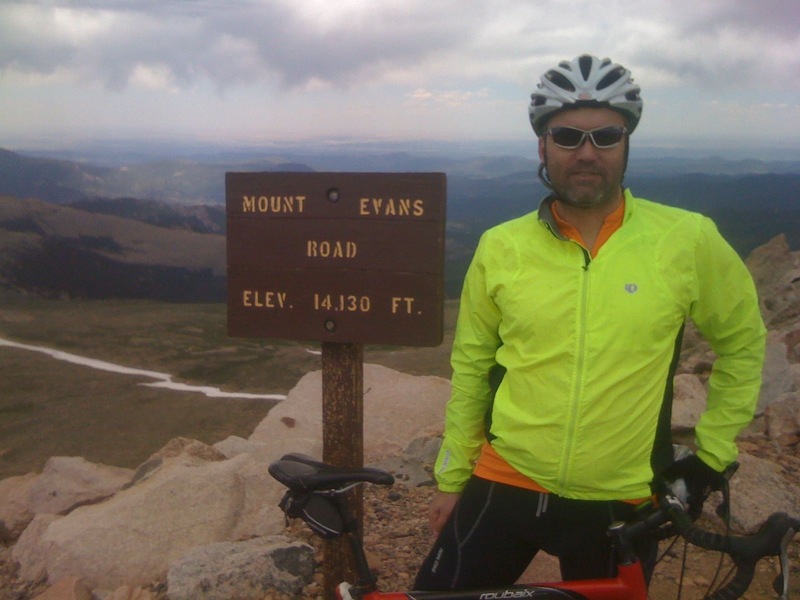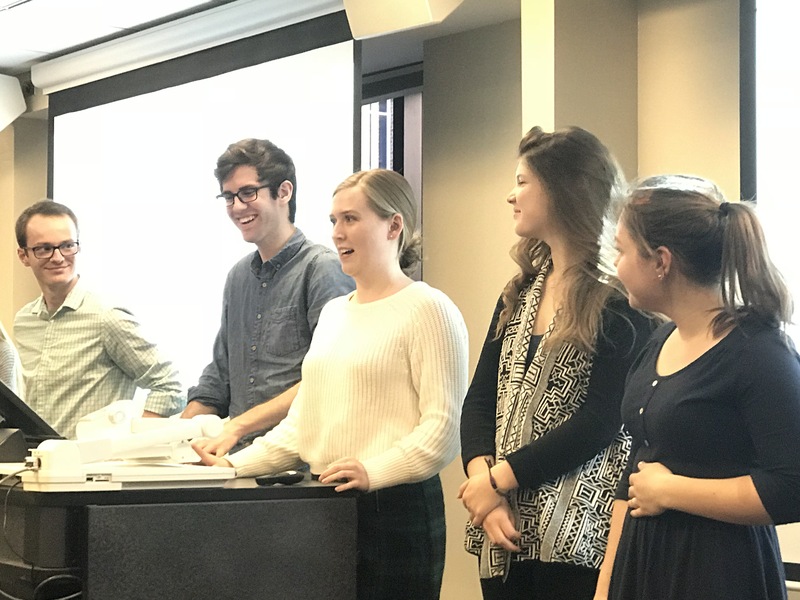Michigan in the World: Why Environmental History Matters
Super Vegans: Amanda and Maya
Everyone has the ability to do something every day to help the environment. The leaders of ENACT and Senator Phillip Hart advocated for the everyday person to get involved, to ride a bike instead of drive a car, to use less water while bathing, to call their local representative and ask what they are doing for the environment. These little things became a movement and changed the landscape of America and how people think about the environment. Our research of grassroots efforts promoting large scale change came home for both of us. We have both been vegan for a number of years for both environmental and animal rights reasons. We personally feel that cutting meat and animal products out of our diets has helped us align our beliefs and our actions, promoting peace and helping the environment. Our research in this class has reinforced our beliefs and strengthened our practice of veganism by emphasizing that everyone’s actions can make a difference.
On this platform, we would like to share with you the ways cutting out dairy and meat in your diet can help the planet. By 2050, a projected 80% increase in global greenhouse gas emissions from food production can be avoided, if the world ate less meat and adopted Mediterranean, pescetarian, and vegetarian and vegan diets. So, if everyone could do a little each day, cut out meat in one meal or swap dairy milk for soy or almond milk, the planet would be greatly impacted. Most people assume cars are the main source of pollution, but, animal agriculture is actually responsible for releasing more greenhouse gases into the atmosphere than all methods of transportation combined. For example, cutting out one burger a week from your diet is like taking your car off the road for 320 miles. If an entire family of 4 skipped cheese and meat once a week, the environmental impact would be equivalent to taking your car off the road for five weeks. If that same family skipped eating steak once a week, it would be like taking your car off the road for nearly 3 months. If everyone in the U.S. ate no meat or cheese just one day a week, it would be like lifting 7.6 million cars off the road.
As the Teach-In and Senator Hart taught us, doing something everyday can make a huge difference. You don’t have to be vegan to help the environment, but by eating consciously and limiting your dairy and meat intake, the world can become a better place. We ask you to “give Earth a chance” and consider a vegan or vegetarian lifestyle!
The Environmental Economic Optimist: Josh
In the past few years, I have really become excited about the economic potential renewable energy sources and other innovations can provide. While researching environmental activism at Michigan, I was surprised at how similar these students felt at the time. They were my age, advocating for a sustainable future. It was fascinating for me to learn about how people would just throw their trash out their car windows or how cars used to run on gasoline with lead. Although these activists made many strides to advance the environmental movement, there is still more work to be done. America has an opportunity to become a global leader in renewable energy. With all of our resources, our strong economy, and the diversity of our landscape, America can become a pioneer in sustainable living. I believe that focusing on environmental innovation will create jobs, stimulate our economy, and will save the environment. I hope that we can inspire others to make a difference in this world and maybe make some money!
History in the Making: Meghan
Millions of people revel at the beauty of America’s national parks each year, yet far fewer people consider the areas in their own communities that are frequently threatened by innumerable environmental hazards. Still fewer believe they can have a substantial impact in protecting these spaces. By studying the work of thousands of devoted environmental activists, our class has truly seen the potential effect of individuals working together to protect air, water, wildlife, and land across America.
Through our historical research, we have witnessed the truly remarkable impact citizens can have when they marry together diverse factions of society towards a shared goal of creating a healthier environment and a more sustainable way of life. For instance, in the 1960s, a group of African American activists reached out to famous scientists Barry Commoner, a union which eventually initiated the Environmental Field Program and lead paint legislation in St. Louis. In 1968, the WMEAC, a group of citizen activists in Grand Rapids, Michigan, wrote a letter to U-M Law Professor Joseph Sax that sparked the Michigan Environmental Protection Act to life, which would revolutionize environmental law. Similarly, among the nine students in this class, there are eight majors and four home states represented. Applying our various interests and backgrounds, we learned about the environmental movement from the people that drove it, a group of inspired individuals involved in scientific, legal, academic, political, and many other spheres but also ordinary citizens who simply wanted to protect the environment for generations to come.
The history of the environmental movement reveals not only the real and immediate necessity of such citizen action to protect our threatened spaces then and now but also something more allegorical. Because the environment encompasses the space we live, the air we breathe, and the water we drink, its protection relates to the very foundation of our daily experience and our freedom. For this reason, environmentalism is uniquely inclusive and pervasive. Therefore, at a time when sixty (and counting) federal environmental policies are under attack and political leaders continue to question the realities of climate change, it is crucial to channel our outrage through our own routines and behaviors as well as through more formal means, such as informing others, joining activist groups, calling our politicians, and even taking our complaints to the courts. By studying the history of the environmental movement of the 1970s, we can discover the successes and limitations of previous responses to environmental problems and learn how to best address the environmental risks that we continue to face today.
Learning About Current Legislation: Julia
Doing research on past water legislation has inevitably resulted in learning about current laws, rules and regulations surrounding clean water. Specifically, I have learned a lot about the Trump administration and its fight against regulations on environmental pollutants, especially those affecting fresh water. Trump, along with his selected EPA head Scott Pruitt, has already overturned some regulations regarding sewage treatment pollution, one about mountaintop stream protection, and others about mandating reusable water bottles in National Parks. The administration is also in the process of rolling back coal ash discharge regulations, and has already overturned anti-dumping rules for coal companies. As the New York Times published in December 2017, many environmental (water, air, coal) regulations have historically been reversed as a direct result of oil, coal and gas companies petitioning, along with other industry groups that are in close relationships with key figures in the Trump administration.
However, the biggest and most comprehensive clean-water legislation in which advocacy groups are involved is called the Clean Water Rule. This 2015 law is an Obama era regulation that determines what gets protected under the Clean Water Act of 1972, and thus impacts nearly every water body in the country. The regulation explicitly clarifies the breadth of federal water protection, expanding U.S. federal jurisdiction to include streams and lakes that have a significant, ecological connection to larger seas and waters. This means that the regulations mandated in the Clean Water Act now apply to more bodies of water than before. In March 2017, President Trump announced that he and his administration intend to overturn it - "review, rescind and revise."
Government regulation like this that leads to protection of fresh water is often perceived as a burden on economic growth and an infringement of political rights. There are specific business interests that don’t want these regulations in place, and they work alongside the Trump administration in seeing that these regulations do not go into place. So, in the case of the Clean Water Rule, it’s big agriculture companies. They do not want a rule in place that protects the small streams on the edges of their farm fields, because it could impact the amount of fertilizers, pesticides and manure they can put down in their fields. The Clean Water Rule prevents them from utilizing their land up to the edge of the stream, requiring that they leave a buffer. However, evidence is clear that acts like the Clean Water Rule do not negatively impact economic growth and development. According to Mike Shriberg from the National Wildlife Federation, if you look at the States that are the most prosperous and have the strongest economies, such as New York, California and Washington D.C., they are also the states with the strongest environmental standards.
I've learned that groups like the National Wildlife Federation are currently fighting to prevent that from happening; unwinding regulations involves a pretty similar process as creating them, so overturning the Rule involves many aspects, including hearings and legal challenges that may play out over the next two or three years. As Mike Shriberg explained, the National Wildlife Federation's strategy to prevent this stripping of regulations is essentially to "keep the [Clean Water Rule] alive long enough to get Trump out of office. We’re never going to convince Donald Trump of anything but we may actually be able to keep this going administratively over the next three years."
As of December 2017, the Trump administration had succeeded in reversing at least 60 environmental rulles - in less than one year in office. This makes me wonder if advocacy groups like the National Wildlife Federation will succeed in stalling the roll-back process long enough to keep the Clean Water Rule in place. More organizations will need to step up and speak out in order to demonstrate that environmentalists are in the majority.
Inspired by the Past: Kiegan
When I was growing up, I attended a summer camp in the foothills of the Sutter Butte mountains in Northern California. The closest town was a 20 minute drive and had a population of fewer than 1,000 people. When you’re at this camp, you are able to experience nature on a different level. The director of the camp was an avowed environmentalist, he had studied ecology in college and he did his best to pass along these values to his campers. Every year, he, along with the counselors, would put on a skit about the dangers of invasive species. A counselor dressed elaborately as a snake, insect, fish, or some other invasive species would reek havoc on an ecosystem. By the end of the skit, the camp would be doubled over laughing, but also hopefully have a new understanding of the delicacy of ecosystems. Those skits were some of my first exposure to environmentalism.
Excavating the Past: Hannah
Although there is still progress to make, our environment is healthier today than it was fifty years ago, before the first Earth Day inspired citizen activists to fight for everyone's right to clean air, safe water, and land free from contamination. Yet the average person isn't aware of the work it took to create these protections. I certainly wasn't, and only after spending a semester researching the history of Michigan's environmental activist groups do I feel I am beginning to understand the scale of their efforts.
Doing this kind of historical research has affirmed my belief in the importance of archives and museums, places that collect and preserve ephemeral evidence of the past. Without the records of environmental activist groups at U-M’s Bentley Historical Library, we would have access to only a part of the story of the environmental movement in Michigan. Many of the people who were involved have passed away, and those who are still alive may misremember what they accomplished. The records at the Bentley contain the newsletters, newspaper clippings, reports, and handwritten notes that preserve their history, most of which are available nowhere else.
It has been exciting to me to see this evidence firsthand and learn about the environmental movement from those who lived it. The commitment they had to protecting the environment is inspiring. One example: environmental activist groups including the West Michigan Environmental Action Council spent ten years negotiating with oil companies and the state as they tried to protect Pigeon River Country State Forest from oil drilling that they believed would irreversibly harm the forest’s wildlife. Their members’ passion and dedication to the cause permeate the documents they left behind. Just as these groups fought to preserve the earth for the benefit of future generations, archives and museums work to preserve historical records so that future generations might learn from them. Using these records, we have tried to excavate parts of the past that have been forgotten and piece the story back together as a way to acknowledge the work of the people who tried to make the world a better place.
Environmental Justice and Public Scholarship: Matt
I was born less than three months after the first Earth Day in 1970 and grew up in an upper-middle-class, almost all-white suburb of Atlanta with little sense of the public policies that shaped this metropolitan ecosystem. Family trips to the Great Smoky Mountains and summers spent at camp shaped my love for the outdoors and consciousness of the need to defend and preserve 'wilderness' and 'nature.' During and after college I went on backpacking adventures across the country, worked as a whitewater raft guide (on a river protected by the federal Wild and Scenic Rivers Act of 1968), and took bicycling trips to remote and beautiful places. Teaching university courses in urban/suburban and political history made me more critically aware of the political forces, especially along lines of race and class privilege, that had defined such outdoor recreation experiences as central to environmental awareness but downplayed the connections to social inequality and environmental injustice. I learned a lot from the research that the students in this class conducted, but the most surprising insights involved how central the labor unions and the issues of what we now call environmental racism and environmental justice were to the most progressive wing of the environmental movement in the late 1960s and 1970s. Barbara Reid Alexander, the Midwest coordinator for the first Earth Day, urged us not to neglect the strong support of Walter Reuther and the United Auto Workers for the radical environmental agenda during this era, a connection she rightly argued has been "lost in recent years for the progressive agenda." Our research confirmed this interpretation of history and also found that many of the organizers of the ENACT Teach-In at U-M and of the national Earth Day made environmental justice central to their mission during the 1970s, including through the work of our local Ecology Center in Ann Arbor and of Environmental Action and the Urban Environment Conference, two national groups that have not received sufficient attention in historical scholarship. There were definite tensions as well as cooperation between the civil rights, antipoverty, antiwar, and environmental agendas--as our section on the ENACT Teach-In documents--but the conventional wisdom that the environmental justice movement did not emerge until the 1980s is wrong, and so is the historical verdict that labor unions and environmentalists cannot cooperate because of the (false) choice between economic growth and environmental protection.
Collaborating with undergraduate student researchers on publicly engaged scholarship is a deeply meaningful learning and teaching experience. "Give Earth a Chance" is the fourth website exhibit that students in my courses have produced for the Michigan in the World project. Because of the structure and size of our Fall 2017 class, this installment is also the most ambitious and wide-ranging, including the first to focus primarily on state and national events beyond the University of Michigan itself. At some point in this sort of project, almost inevitably, you come to stop thinking of your role as primarily that of the professor who is teaching the students about environmental history and digital humanities skills, and come to view yourself more as a collaborator on a research team that is confronting challenges under the deadline pressure of a single semester, and as a contributor to and editor of a scholarly enterprise that is creating something valuable and lasting for a public audience. The "Environmental Activism in Michigan" research team worked extremely hard finding documents in the archives, searching the databases, converting the amazing environmental policy programs produced by the University of Michigan Television Center into usable excerpts, and conducting and editing videotaped interviews with historical participants. Interviewing the organizers and leaders of the ENACT Teach-In, the national Earth Day demonstration in 1970, and the Ecology Center of Ann Arbor was inspiring to me and to the students as well, as the personal accounts above attest. Like most historians, and like many people affiliated with the University of Michigan, I knew a lot about the 1965 Vietnam teach-in but much less about its environmental counterpart in 1970, organized primarily by graduate students in the sciences. David Allan, the ENACT co-chair when he was a graduate student in the School of Natural Resources and now a professor emeritus of the renamed School for Environment and Sustainability, told us in an interview that the ENACT leaders had not seen their ecological crusade to save the environment as politically confrontational at the time, but of course they recognized that "capitalism was the root of all evil." We completed this website in December 2017, at a time when environmental regulations on corporations and government agencies are under extraordinary political assault in the United States, an unwelcome but urgent reminder of why environmental history and publicly engaged history matter. Pondering Allan's juxtaposition--the widespread belief at the ENACT Teach-In that ecological balance and environmental protection could forge a new political consensus, and the parallel recognition that this would require a mass grassroots mobilization to demand curbs on corporate and government power in a capitalist economy--reveals both how much and how little things have changed since the Earth Day movement in 1970.
Sources:
"Livestock's Long Shadow: environmental issues and options". Food and Agriculture Organization of the United Nations. Rome 2006
Tilman,Clark, “Global diets link environmental sustainability and human health, Nature, November 12, 2014.
Hamershlag, K. “What You Eat Matters: Eat Less Meat + Cheese and Buy Greener When You Do,” Environmental Working Group, 2011.
"Waters of the United States (WOTUS) Rulemaking." EPA. November 21, 2017. Accessed December 24, 2017. https://www.epa.gov/wotus-rule.
Popovich, Nadja, Livia Albeck-Ripka, and Kendra Pierre-Louis, “60 Environmental Rules on the Way Out Under Trump,” The New York Times, Updated December 15, 2017. Accessed December 20, 2017. https://www.nytimes.com/interactive/2017/10/05/climate/trump-environment-rules-reversed.html.
"Intention To Review and Rescind or Revise the Clean Water Rule." Federal Register. March 06, 2017. Accessed December 24, 2017. https://www.federalregister.gov/documents/2017/03/06/2017-04312/intention-to-review-and-rescind-or-revise-the-clean-water-rule.
Barbara Alexander to Matt Lassiter, email correspondence, October 6, 2017
David Allan Interview by Amanda Hampton, Ann Arbor, Michigan, November 6, 2017

